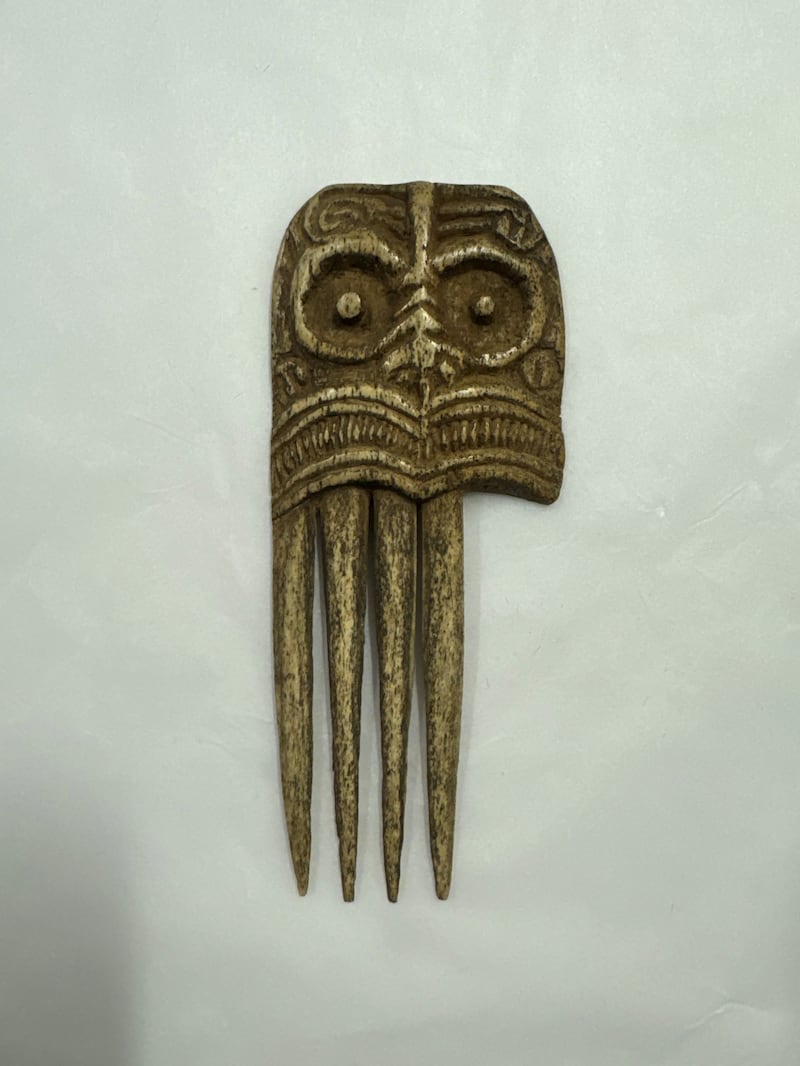A local printmaker from Matakana took the trip of a lifetime to London’s British Museum, where he saw the taonga that influenced his artwork over the last decade in person.
Ringatoi Paora Tiatoa (Ngāpuhi, Ngāti Raukawa) was invited to visit the museum, viewing over 60 taonga Māori in its possession. However, there was one taonga that caught Tiatoa’s eye long before he even visited the museum - a whalebone heru (comb) from Whanganui.
He spotted the heru while reading about the taonga Māori in the British Museum book in 2013.
“When I turned the page there was this kind of a transfer thing that happened with me and the comb. I was just captivated and I still am today.”
Over the last decade, this taonga has served as the main inspiration for many of Tiatoa’s pieces.
“I was very thankful for the opportunity to be able to go over and [see] the taonga that my work is based on.”

Little is known about the history of the heru, recorded as number 435. The whalebone taonga measures 15.50cm high and 7cm wide.
“[The heru has] little eyes and he’s actually got a face,” Tiatoa says.
British Museum records say it is believed to have been collected in the 19th century and was formerly in the collection of Lady Palmer of Wanlip Hall.
This treasure is just one of over 3000 other taonga Māori and other indigenous artefacts at the British Museum.
Tiatoa, who visited in August, says among the extensive taonga collection were pounamu, taiaha, tewhatewha, tekoteko and tukutuku carvings.
“It was like a real visual explosion.”
The artist says he felt the presence of tupuna while he was there.
“Dreaming about [holding the heru] in my third year of art school - I didn’t know how I was gonna get there, [but] I knew that a key thing for me was to produce artwork and keep printing.”
However, the question remains whether or not the British Museum is the right place for these taonga.
“I think no but at the same time I think yes, because all of [the taonga] are so well preserved.”
Tiatoa says as an artist, he tries to keep himself ‘in an art context’.
“Not so much [saying] they don’t belong to you - that’s not what I’m about. I’m a printmaker, I make art.”
The discussion around the return of indigenous artefacts to their countries of origin was highlighted earlier this year, when Willie Jackson visited London.
He became the first Māori to debate at Oxford Union, arguing why British Museums are very British.
“British Museums are very, very British. Because it’s very, very, very British to take from indigenous people and never give it back,” Jackson says.
Tiatoa commends the British Museum on the pristine condition of these taonga.
“Everything I looked at looked like it was made yesterday. [It] actually gave me a higher appreciation [for] the taonga.”
But he believes taonga should return back to their kaenga.
“I definitely think that taonga should be returned home - the British Museum has over 3000 taonga from New Zealand.”
“There have been some [taonga returned] - heru, combs, hoe (paddles), korowai (cloaks). All of them returned? That’d be great.”
Tiatoa says this occasion was a highlight of his art career and he hopes to revisit the taonga in the future.



